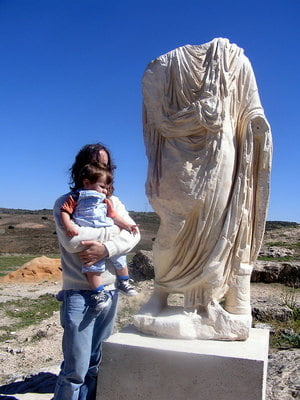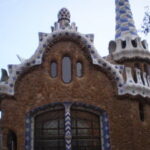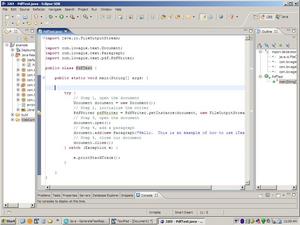A Great Way to See the Past
Madrid is known as a modern city with the most vibrant night life in Europe, a city that only sleeps in the middle of the day. However, less than an hour away is a vestige of another time, when Madrid did not exist and the land was ruled by the emperor of Rome. Rediscovered and in the process of being restored, the city of Segobriga sits in the middle of La Mancha and dates to the days when Jesus walked the earth.
In Segobriga, the casual visitor is able, without doing more than taking a short walk, to step back in time. With a guided tour or with the map that comes with your admission ticket (available in several languages, including English), you can walk into the center of an arena where gladiatorial contests were once fought, or onto the stage of a theater where classic comedies and tragedies were once played out. All this can be done for less than the price of a movie.
About Segobriga
Romans first laid claim to the lands of what is now in the third century B.C., following the defeat of Carthage in the Punic Wars. The residents of the Iberian Peninsula, though, were not amenable to Roman rule, and fought against it for nearly two centuries before finally being completely conquered in 19 B.C. Following the conquest, Romanization proceeded rapidly, and during Augustus’ reign the city of Segobriga became a Roman municipality, and its residents citizens of Rome.
The city of Segobriga (Sego-briga) was founded before the Roman invasion by Celtiberians. Under Roman rule, Segobriga became an important urban and commercial center. What remains for us to view is one of the best-preserved examples of a Roman city that can be found outside of . The development of the Roman city of Segobriga started sometime during the first century B.C. , when coins were minted and the walls of the city began to be constructed. These walls were finished during the reign of Augustus, the first Roman Emperor and the nephew of Julius Caesar. Once the walls were completed, the structures typical of and important to a Roman city were built, including the theater, the amphitheater and the baths, all of which can now be seen, at least partially excavated and restored.
Segobriga’s most important economic activities were mining and stone carving. Segobriga was famous for lapis especularis, a translucent stone that was used all through the empire to make windows and floors. In the days before the technology existed to create panes of glass, this stone made it possible to let light into dwelling while keeping weather and wind out. The city grew and was quite affluent because of this resource. As the Roman Empire began to decline, the Visigoths rose up and conquered the region, including the city of Segobriga. These Visigoths built a Christian church, which can be seen in its ruins, and left many grave markers.
The monuments
The most impressive of the excavated monuments is the amphitheater, a round arena in which 5,500 people could sit and view the contests. Typically, these included gladiatorial battles between individual combatants, fights between men and animals, and other public spectacles.
The theater of Segobriga was, in its prime, the heart of the city. Seating 2,000 people, with lavishly decorated columns and statues, it had an attached bathhouse, which has been excavated and restored. A wall with niches in it has been uncovered, where bathers would place their possessions while indulging in the very popular Roman habit of bathing.
A main, monumental bathhouse has also been found. This building had a large covered courtyard with columns, which people used for strolling and exercising. From this courtyard, one could access the warm, hot and cool rooms, which were usual in Roman baths. In the cool room (“frigidarium”), there’s a pool which is still in almost original condition. The access to the bathhouse was a street with stairs, which has been restored.
While roaming the streets and paths of Segobriga, there is little distraction from nearby modern constructions. A few buildings near the ruins house an archaeological school, but the landscape overall remains nearly unchanged from the one the Romans who lived in Segobriga saw.
Segobriga is especially delightful if you can visit during the week, as the weekends tend to be very crowded. The nearby village of Saelices is a nice stop for a café con leche and a chorizo sandwich (a hearty Spanish country breakfast). You can also order a glass of wine from the region as well as some manchego cheese, made locally.
Visitor’s Information
Fees
Entrance fee: 4 euros
Discount fee (students with valid ID and groups of more than 15 people): 2 euros
Hours of operation: April 1-Sept 30: 10:00 a.m. to 9:00 p.m.
Oct 1-March 31: 10: a.m. to 6:00 p.m.
Free parking, clean bathrooms, tiny exhibit hall and small café on premises (the café is in the parking lot). Also, there’s a very small gift shop where you buy your tickets, where you can get hats, T-shirts and posters commemorating Segobriga.
Getting there
The archeological park of Segobriga is located 104 km (62 miles) from Madrid in the province of Cuenca, on the A-3 road which connects Madrid to , exit 104. Address: Carretera De Saelices a Villamayor de Santiago, s/n 16430 Saelices (Cuenca)
Tel. +34 629752257 / Fax +34 969132002
The easiest way to get to Segobriga is to rent a car. Car rentals are simple and all you need is to be 25 years old and to have a driver’s license in your home country. Rates vary widely between companies and dates, and relatively inexpensive weekly rates are available which allow a thorough exploration of the country. Also, be aware that the vast majority of vehicles in Europe have manual transmissions. A budget alternative is to take a bus from the central station in Madrid to the town of Saelices, which is 3 km (2 miles) from the ruins. The walk is rural and quiet.
Reference:
- This is the website of Segobriga Archeological Park (only available in Spanish): www.jccm.es/cultura/parques/segobriga/index_ie.html






